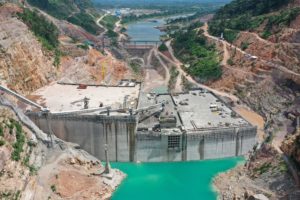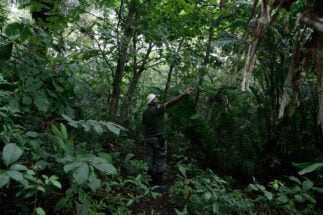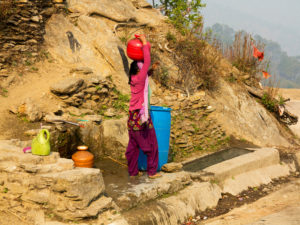The “Green development guidelines for overseas investment and cooperation”, issued jointly by the Ministry of Commerce (MOFCOM) and the Ministry of Ecology and Environment (MEE), encourages Chinese businesses to integrate green development throughout the overseas investment process. Where local standards are insufficient, they also suggest that companies should “follow international green rules and standards”. As such, they represent a step away from China’s traditional reliance on host country rules and could pave the way for the implementation of much higher standards in infrastructure projects under the Belt and Road Initiative (BRI). The guidelines call for strengthening engagement with host country environmental protection organisations. They also name non-fossil energy technologies as key areas for investment.
The guidelines are comprehensive, covering climate, biodiversity and pollution. Specifically, they stress the need to:
- Adhere to the “green development concept” throughout the entire process of foreign direct investment and cooperation;
- Encourage the practice of environmental impact assessments and due diligence in accordance with internationally accepted standards;
- Apply high standards at the planning and design phase of infrastructure projects, and strengthen contact with host country governments, media, local people and environmental protection organisations; and
- Support investment in solar, wind, nuclear and biomass energy and other forms of clean energy.
The document is a significant upgrade on MOFCOM’s 2013 “Guidelines for environmental protection in foreign investment and cooperation”. The emphases have shifted from a bare minimum of pollution control that meets host countries’ standards towards the promotion of a “green development concept” and encouragement of higher standards used in host countries where appropriate.
Across all three aspects of climate, pollution and biodiversity, the 2021 guidelines now include specific climate-positive measures (eg support overseas clean energy investment). Furthermore, Chinese enterprises are asked to “prevent adverse impacts on biodiversity” according to host country laws or international practices. In the 2013 version, such practices were only “encouraged” to basically satisfy local laws. The progress builds upon some of the policies issued in-between, such as the 2020 Climate Finance Guidance. Finally, the guidance also promotes controlling the discharge of waste gas, water, noise and solid waste, and enhancing the integrated reuse of waste. Thus it focusses on broader aspects of pollution control.
Why are the guidelines significant?
Firstly, the whole-lifecycle approach encouraged by the guidelines represents a more comprehensive way for companies to approach environmental responsibilities in their overseas projects. Secondly, and as already mentioned, the document clearly emphasises “international green rules and standards”, driving Chinese overseas investments to go beyond “host country rules”.
To support a whole lifecycle approach for green investment, the document specifies activities and responsibilities, particularly of enterprises doing projects overseas for different investment stages. In the project planning and evaluation phase, Chinese enterprises shall actively fulfil their environmental responsibilities, including complying with host countries’ laws and regulations, and promoting the coordinated development of the local economy and society. Chinese enterprises are encouraged to follow international common practices for the environmental impact assessment (EIA) and due diligence, and identify potential environmental risks before deciding on whether to make an investment overseas.
If implemented well, this could be a gamechanger for biodiversity
In the implementation phase, enterprises shall conduct ecological and environmental risk prevention measures and improve the capacity of ecological and environmental management. Chinese enterprises should follow the host countries’ rules and standards and take reasonable and necessary measures to reduce or mitigate adverse environmental impacts. They are asked to enhance their management systems to monitor environmental risks and accordingly have an “early-warning system” for environmental risks, and formulate contingency plans for environmental accidents and emergencies. They are encouraged to communicate more with host country governments, media, local communities and environmental NGOs while fulfilling environmental and social responsibilities.
Reporting and disclosure is also emphasised and Chinese enterprises are encouraged to comply with international requirements, including but not limited to the United Nations’ Framework Convention on Climate Change, Convention on Biological Diversity, 2030 Sustainable Development Goals, and the Green Investment Principle for BRI.
Besides projects and investments, the guidelines also cover trade, by requiring companies to speed up integration with the global green supply chain, to carry out green procurement and purchase environmentally friendly products and services. If implemented well, this could be a gamechanger for biodiversity, as the production of commodities such as soy and palm oil have been identified as a key driver of tropical deforestation.
Beyond ‘host country rules’
Since China’s “going out” reform began in 1999, Chinese enterprises have been encouraged to comply with host country laws and regulations to obtain relevant local and Chinese permits and licences. However, the robustness of host countries’ regulatory environment and governance can vary. Due to the lack of incentives to comply with international laws, Chinese enterprises have often been criticised by NGOs and media for their environmental and social impacts on local ecosystems and communities. At the same time, the lack of environmental standard application has created financial risks for Chinese investors and tended to limit access to international financing sources, which usually come with higher environmental and social standards.
As mentioned, recognition of international standards began in the 2013 “Guidelines for environmental protection in foreign investment and cooperation”. This encouraged Chinese enterprises to “research and learn” from international organisations and multilateral financial institutions. In 2015, the National Development and Reform Commission and several ministries issued a “vision” for the BRI, which emphasized issues of green and low-carbon development, as well as biodiversity protection. Since then, much progress has been made in realising this vision. The 2017 annual policy recommendations from the China Council for International Cooperation on Environment and Development (CCICED) contained stronger language on greening the BRI, which received endorsement from President Xi Jinping. Since then, the BRI International Green Development Coalition has been established, and a series of special policy studies on greening the BRI were conducted in 2018, 2019 and 2020. In 2020, five ministries issued “Guidance on promoting investment and financing to address climate change”, which promotes the application of Chinese standards in overseas finance. The 2021 guidelines fully encourage the use of international best practice standards for environmental management of overseas investments.
The guidelines are congruent with many of the recommendations of the Green Development Guidance published by a group of international advisors and backed by various ministries, particularly the MEE in December 2020. This shows an increased willingness from the government to engage with non-government stakeholders in formulating overseas investment policies.
A greening BRI
The new guidelines are soft law, so can’t be enforced in court. They send a clear signal, however, especially to the state-owned enterprises (SOEs) that MOFCOM’s policies have steer over, including key BRI actors such as China Development Bank, China Export-Import Bank, and Sinosure, China’s export credit insurance agency. This policy gives a boost to their efforts to go green and helps to set their expectations that stricter measures are likely to follow.
Efforts to go green are playing out in the real world too. Last year saw more BRI investments in non-fossil than fossil fuel projects, and the first half of this year saw no new investments in overseas coal power projects, a first since the BRI began in 2013. China’s moves in Bangladesh to distance itself from remaining coal power projects and ICBC’s decision to pull out of the Sengwa coal power plant in Zimbabwe also demonstrate the trend. This shift away from climate-harming projects also makes economic sense, as electricity from new solar power is already up to five times cheaper than from new coal power. Nevertheless, the green shift and its speed should not be underappreciated: only a few years ago, international criticism of China’s overseas coal investments was ubiquitous – as were the financial risks. Take for example the Lamu coal plant in Kenya, which was suspended by a court ruling in 2019, following a challenge to its environmental impact assessment, or the Batang Toru hydropower dam in Indonesia, which incurred major delays following allegations that it would harm the habitat of a unique species of orangutan.
We expect such trends to continue, with China becoming more and more pro-active in greening its overseas investments. The new guidelines allude to “relevant environmental protection requirements on overseas projects”, the content of which are not yet clear. This suggests that further requirements on greening overseas investment are in the making. And in the runup to the Glasgow climate COP26, it is likely that China will announce further steps to make the BRI compatible with the Paris Agreement on climate change.








